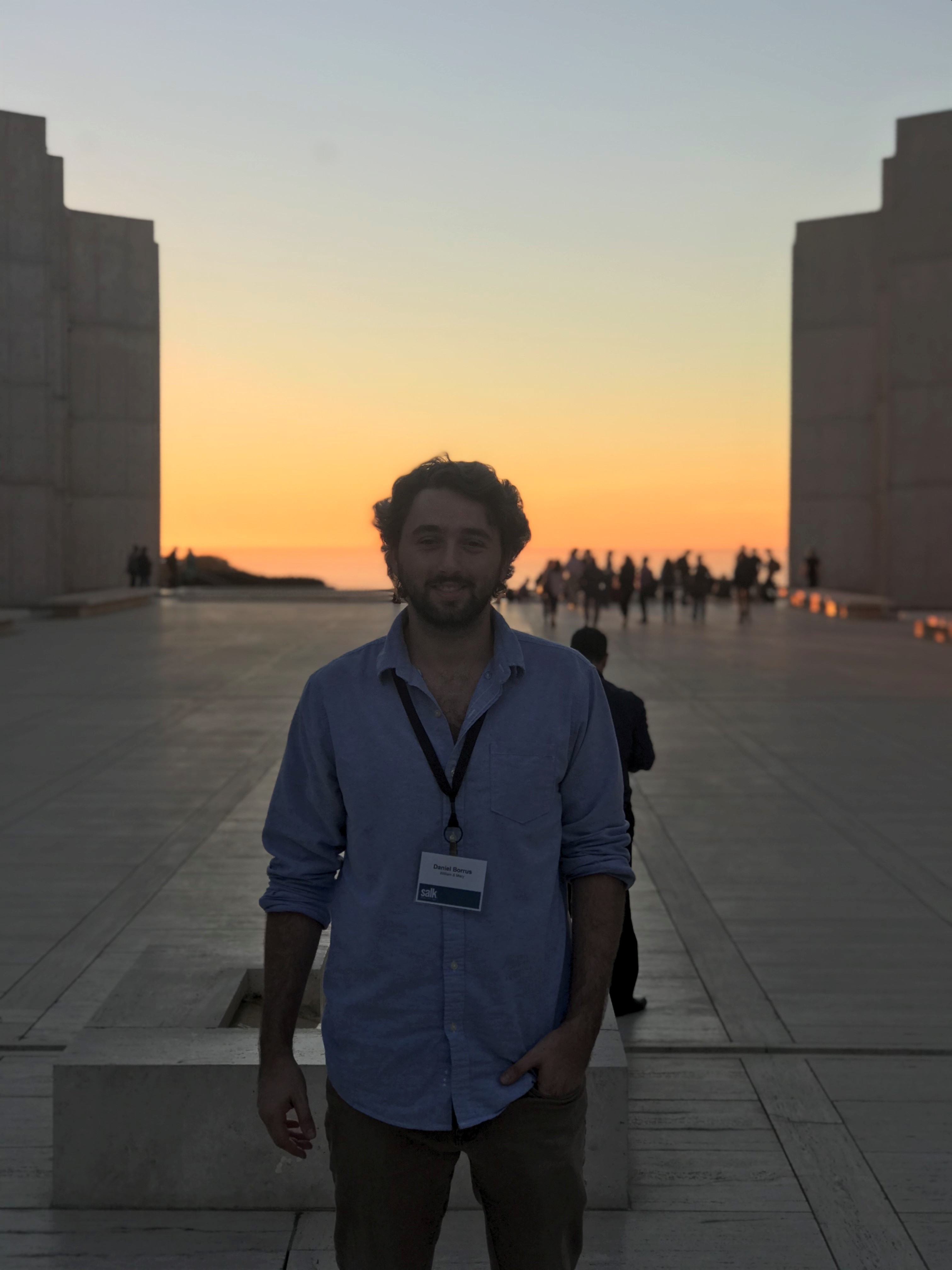Who is Daniel Borrus?

Hello internet traveler! My name is Daniel Borrus.
I am a trained computational neuroscientist and a data scientist looking for work in southern Connecticut. I recently received my doctorate in computational neuroscience at William & Mary in Virginia, and I am looking for my next step!
I am interested in cutting-edge biotech that incorporates new computational tools, such as machine learning and AI, to improve patient care. I enjoy programming, problem solving, and long-winded discussions on the relationship between humans and technology.
Academic background

Undergraduate
I studied neuroscience as an undergraduate at William & Mary and minored in computational and applied mathematics and statistics (CAMS). My undergraduate research focused on bistable neurons, and involved modeling biological neural networks using Hodgkin-Huxley style equations. I presented my work to the undergraduate symposium and defended an undergraduate thesis on the project.
Graduate
During graduate school I trained under Dr. Gregory Conradi-Smith and Dr. Christopher Del-Negro at William & Mary. Our mission was to investigate the biological neural networks underlying breathing in mammals. I used both computational neuroscience and electrophysiology tools to probe the cellular and synaptic mechanisms that generate breath. That work culminated in me first-authoring two academic papers and a Ph.D. dissertation. I defended the work at multiple national conferences and during my Ph.D. defense.
Technical skills
My Dad brought home a family computer in 1999 and I haven’t gotten over it yet. My obsession with computers has led to a suite of technical proficiencies.
Mathematical modeling
Thanks in large part to my academic training, I am experienced with building, tuning, and implementing a variety of math models. Most of my experience is in the biological sciences (neural networks, excitable membrane dynamics, infectious disease networks) but I am also familiar with canonical models in physics, engineering, and economics.
My languages of choice for this style of work would be Python and MATLAB.
Data Science
During my research, I was involved with every step of the data pipeline. Usually, I would collect my own data (e.g., multichannel electrophysiology time series). I would handle, process, clean, and format the data as needed. Then I would run whatever analysis or statistics I deemed important - descriptive statistics, regressions, fourier analysis, etc. And finally, I would take the lead on disseminating the key information of the data to an audience by means of graphics and visualizations. I enjoy handling datasets and discovering the story they hold, and then sharing that story with an audience.
This work typically saw me using Python and MATLAB for the data analysis, but also LaTeX and Prism for visualizations.
Machine Learning and High Performance Computing (HPC)
I first came across an artificial neural network during my first year of graduate school. A network has been trained to create a Kanye West song only from listening to the rapper’s album 808 and Heartbreak. The song was terrible (it was still 2017), but I was captivated. I immediately taught myself the basics and began attempting to make my own AI music on the HPC cluster at William & Mary (No one was really using the two Titan GPUs at the time! So I didn’t feel so bad about taking the space. :))
I used the HPC to train a network to play me in tic-tac-toe (on a finite plane LINK) and the classic battleship. At the time, MATLAB’s machine learning tool-kits where still very rudimentary, so a college and I built our own package for building customizable neural networks in MATLAB. For slapped together Ph.D. student code, it worked great!
I acquired my own NVIDIA graphics card a few years later and really began experimenting with the standard Python suite for machine learning, such as scikit-learn, TensorFlow, and PyTorch. I experimented in my free time computer vision, financial forecasting, and models for non-linear integration of dendritic post-synaptic potentials in neurons.
Now, ChatGPT and I have a discourse daily XP.
Photography
In mid 2022, I discovered my late father’s Pentax Spotmatic and decided to shoot a few rolls. By the time the film came back from the developer, I was hooked.
The two types of photography I enjoy the most are 1) shooting portraits and 2) shooting compelling patterns or tactile scenes. In all my photography, what I am look for is something that pulls on the eye. The kind of photograph that engages the viewer, and impinges on some unknown and undescribable aesthetic pleasure sensor in their brain.
Portraits
I find the human body and human expression to be the most interesting and engaging of all art subjects. This shouldn’t come as a surprise. As social creatures, we are wired to pay a ton of attention to emotion, mood, and the inner-thought of other human beings. We have an uncontrollable impulse to soak in a human subject when it is presented.
Patterns
If our love of the human form is self evident, our love of patterns and pleasing shapes is arguably not. Yet our eyes are drawn to compelling and well composed scenes. This photography is an exploration of what we humans find beautiful and engaging in simple geometric exhibits, maybe as a way to understand why. Here, my inspiration certainly draws from film-makers such as Wes Anderson and others, who use simple shape and color to elicit wildly more complex emotions and feelings than can be reasonably explained.
Every frame a painting.